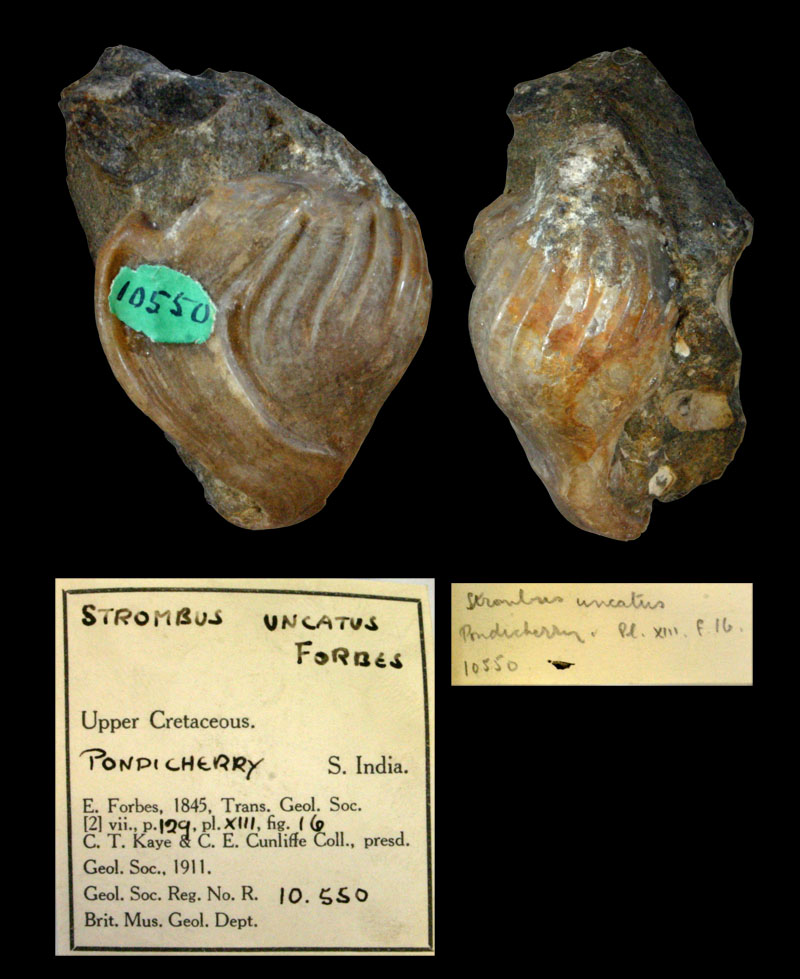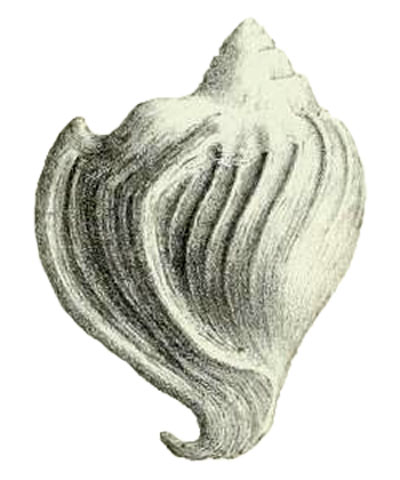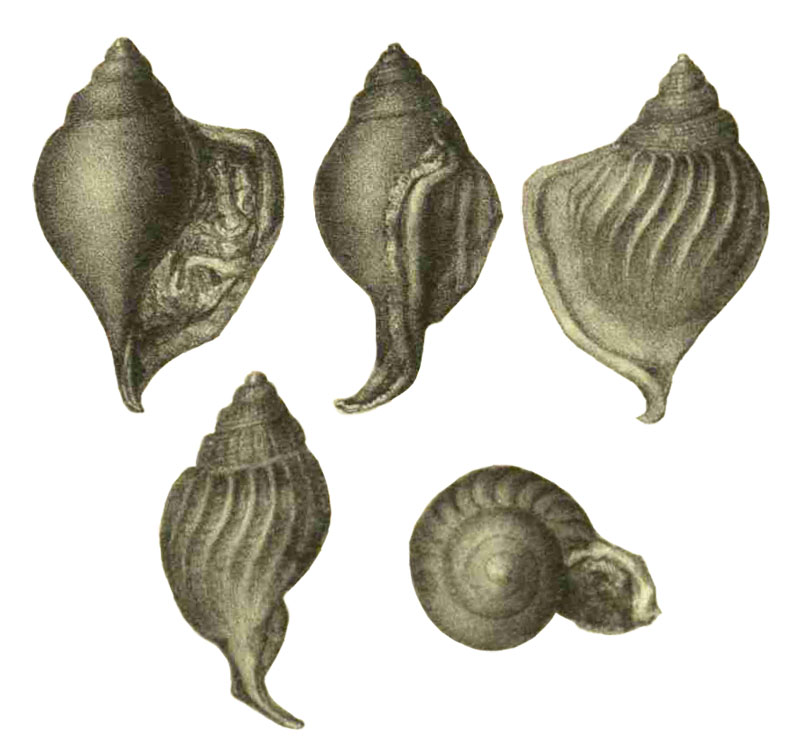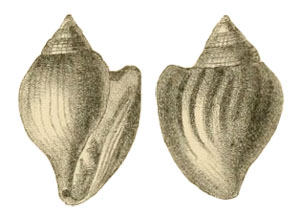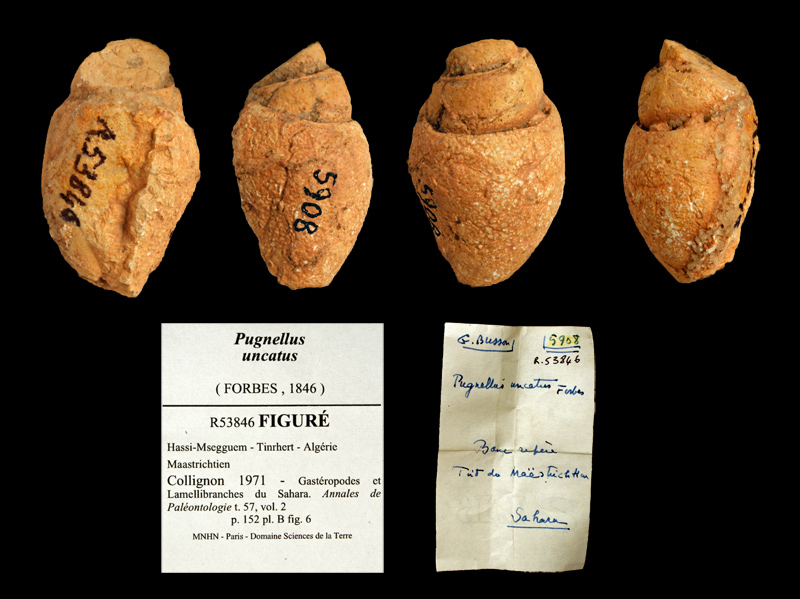Stromboidea
Original description of Strombus uncatus by Forbes, 1845:
- "S. testā ovatā, crassā, anfractibus 6, convexiusculis; spirā exsertā, lęvi: ultimo anfractu supernč regulariter flexuoso-sulcato; labor externo dilatato, late aliformi, posticč incrassato, margine crassissimo, supernč sinuato, emarginato, infernč caudā hamatā; labor interno crassiusculo, spiram vix incrustante."
- "Somewhat triangular in form in consequence of the peculiar shape of the wing-like outer lip, which is notched above and gradually curves to the canal, which suddenly turns forward in the form of a hook. The back of the lip is strongly thickened. The body-whorl is marked for its upper two-thirds with flexuous regular sulcations, ten to twelve in number. The spire is smooth and short, but prominent. The superior cleft claw of the lip does not rise as high as the suture of the body-whorl. The young shell is smooth and resembles a Buccinum. The cast is smooth and polished."
Locus typicus: Pondicherry, South India, India
Stratum typicum: Upper Cretaceous
Pugnellus uncatus (Forbes, 1845); Holotype; Upper Cretaceous; Pondicherry, South India, India; Coll. BM(NH), No. 10550; Copyright BM(NH)
Strombus uncatus Forbes, 1845, pl. 13, fig. 16
Pugnellus uncatus in Stoliczka, 1867, pl. III, fig. 9, 9a-d
Strombus uncatus in Philippi, 1887, pl. 1, fig. 7
Pictures from institutional collections
Pugnellus uncatus (Forbes, 1846); Maastrichtian, Cretaceous; Hassi-Msegguem, Tinrhert, Algeria; Coll. MNHN R53846; Copyright Museum national d'Histoire naturelle Paris
References:

